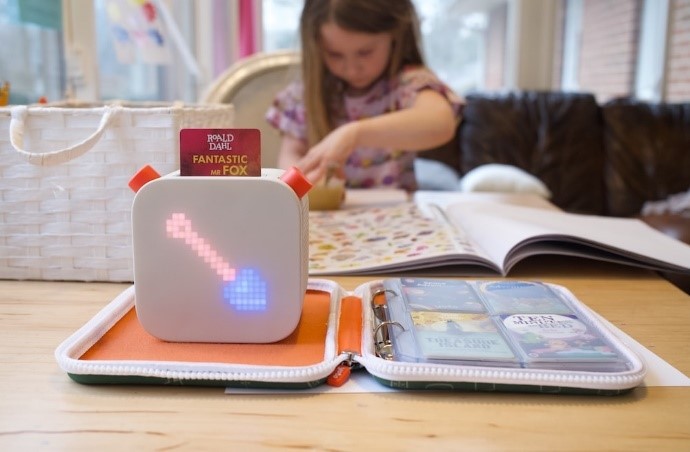Smart Speakers and Internet-connected Devices
Since the rise of technology, parents have been concerned about granting their children access to smart speakers. There are advantages and disadvantages of children using smart speakers that can connect with the internet. Parents can play an influential role in ensuring their kids safety online and here is a guide that includes the most important information.
Firstly, parents should advise and guide their kids before their first experience with internet connected devices. Parents should follow this 10-step guide to lead their children to staying safe online:
1. Understand your Smart Speaker
We adults have become very confident in using smart speakers in our everyday lives. The best manner to pass this confidence to your children is by being well-versed with the device yourself. Whether it is an Amazon Echo/ Echo Dot, Google Nest Audio or Apple Homepod, understanding your smart speaker will help you guide your child better.
2. Explain what a Smart Speaker is
This is a simple but essential task. Your child will not be able to properly understand what a smart speaker is, if you do not explain it. Start by explaining how it works. In particular, mention that the device works with voice recognition to perform tasks. This will help them understand the extensive capabilities of the small device and how they should interact/ speak to it.
More importantly, children must be informed about the limitations that smart speakers have. Smart speakers do not know everything and should NOT act as a substitute for human interaction or advice.
3. Set the Rules
You should set clear rules and boundaries, so that your child clearly understands what the smart speaker should or shouldn’t be used for. For example, it is okay to use it for homework, but it is not okay to make a purchase without permission.
Another advise is to tell your children to contact you first, if they are unsure if they can ask the smart speaker something. Additionally, just because they can ask the speaker anything, this does not mean they should.
4. Teach Politeness
If your child learns to interact with the smart speaker in a polite way, this may reflect on behaviour patterns in the real world. Encourage them to use polite words such as ‘please’ and ‘thank you’ when interacting with the smart speaker.
5. Model Good Behaviour
For many children, their parents are role models and they will copy a lot of behaviours by observing them. Therefore, if you already have a smart speaker, you should model good behaviour by using it responsibly and in a polite manner.
6. Encourage Educational Use
A smart speaker can provide enormous advantages in educating children and helping them develop and expand their knowledge. Smart speakers can serve learning purposes, such as solving maths questions, learning new words, spelling and grammar. Additionally, educational games are available on many smart speakers, helping children learn in a fun and interactive way.
7. Discuss Privacy
The topic of ‘privacy’ has always been a hot topic within smart speakers, especially since the ‘Amazon Alexa spying scandal’. Children must understand that anything that is being said may be recorded or stored. This will help them understand the importance of not sharing personal information or sensitive data with the speaker.

In addition to that, there is the opportunity to delete voice data regularly and here is how to do so for Amazon devices and Google products.
8. Use Kid-Friendly Features
The best example of a smart speaker designed for kids is the Amazon Echo Dot Kids (5th Generation).

Using a kid-friendly version will maximise the possibility of your child using it safely. This smart speaker has explicit music filter, which disable the access to inappropriate music. Alexa will also not give answers to inappropriate questions or grant access to shopping. Additionally, parents can set daily limits to prevent their children from becoming over-reliant on the device. Set off-limits such as during meal or bedtime to cultivate healthy tech habits.
9. Use Parental Controls
Furthermore, parents can review the kids’ activities on their Amazon Echo Dot Kids via the parent dashboard. Parental control can also be set for Apple Homepod, Google Nest Audio and Amazon Echo. Setting this up can help gain valuable insights into their interest and whether they are using it appropriately. If not, you can discuss the issues with them.
Additionally, installing the latest software will increase security and child protection.
10. Secure your Accounts and Network
Your Wi-Fi network, accounts (i.e. Amazon) and devices should be secured with strong passwords. This includes using unique passwords with upper and lower case letters, as well as including numbers and special characters. For the Amazon devices it will also be important to two-factor authenticate your account and here is how to activate 2FA on your Amazon account.
Final Advice
Remember that technology should not replace human interaction. Therefore, continuously engage your child in activities that encourage creativity, critical thinking, and social skills. Technology should be used as a supportive tool not as a replacement to humans. These 10 steps will act as a good starting point to securely introduce your kids to smart speakers. It is important to have ongoing conversations about these guidelines, as your child grows and the technology evolves.

